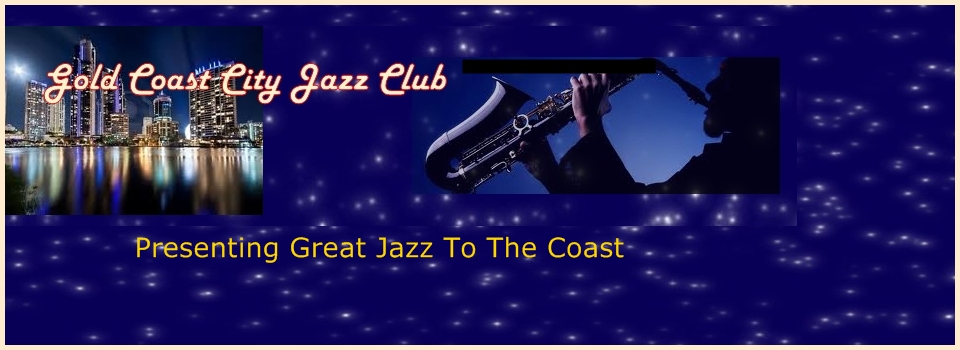The only time that Stan Getz and Donald Byrd were filmed together
Tenor-saxophonist Stan Getz and trumpeter Donald Byrd both had long careers that overlapped for at least four decades.
Despite that, they rarely crossed paths and were only documented playing together on one occasion, which was fortunately filmed.
In Germany on July 29, 1958, Getz and Byrd performed John Lewis’ “Fontessa,” a song rarely performed by anyone outside of the Modern Jazz Quartet.
With fine if unseen backing by pianist Hans Hammerschmid, bassist Doug Watkins and drummer Art Taylor, Byrd (who here sounds a bit like Clifford Brown) and Getz (who displays his usual beautiful tone) swing together, making one wish that this had happened on other occasions.
<Trumpeter Donaldson (“Donald”) Toussaint L’Ouverture Byrd II. was born on December 9, 1932 in Detroit, Michigan.
Donald Byrd started his career by performing with Lionel Hampton while still in high school.
He served in the U.S. Air Force (playing in a service band), and earned degrees from Wayne State University and the Manhattan School of Music.
A member of Art Blakey’s Jazz Messengers and the Horace Silver Quintet in 1956, Byrd was one of the “Young Lions” from his era, recording with many top modern jazz musicians of the era including Kenny Clarke, Hank Jones, Hank Mobley, Jimmy Smith, Jackie McLean, Mal Waldron, John Coltrane, Red Garland, Lou Donaldson and Thelonious Monk.
He co-led a quintet with baritonist Pepper Adams during 1958-61 and recorded regularly as both a leader and a sideman for the Blue Note label, really maturing into a strong player during the 1960s.
Among his best albums of the decade are Free Form, A New Perspective (which utilizes a vocal choir and includes “Cristo Redentor”), Mustang, Slow Drag, and Fancy Free
While 1970’s Electric Byrd found Byrd exploring a funky brand of fusion, 1972’s Black Byrd, which had him teaming up with arranger Larry Mizell, had Byrd switching to electric funk and dance music; it was a major hit.
From then on Byrd and his Blackbyrds primarily performed music that was outside of jazz, gaining a large audience.
After the concept ran its course, Byrd primarily worked as an educator although he recorded three final jazz albums during 1987-91 that featured him returning to hard bop.
Donald Byrd was semi-retired as a player after that period, passing away in 2013 at the age of 80.
Stan Getz (1927-91) always had a very attractive tone on the tenor in addition to being an adventurous yet melodic improviser.
Late in his career, Getz made an appearance on a televised concert with the Boston Pops Orchestra, directed by John Williams.
With the orchestra plus a fine rhythm section, Getz plays a swinging version of the early 1940s standard “My Shining Hour.”
Personnel:
Stan Getz, tenor
Bob Winter, piano
John Lockwood, bass
Grady Tate, drums
Boston Pops Orchestra
Tenor-saxophonist Stanley Gayetski (Stan Getz) was born on February 2, 1927 in Philadelphia, Pennsylvania.
Getz grew up in New York City, taking up the tenor when he was 13 and joining the Jack Teagarden Orchestra in 1943 when he was just 16.
He had stints with the big bands of Stan Kenton, Jimmy Dorsey and Benny Goodman before gaining fame for his work with Woody Herman’s Second Herd during 1947-49, being one of the “Four Brothers” and taking a famous solo on “Early Autumn.”
While influenced early on by Lester Young, Getz had his own beautiful sound by the time he left Herman’s band to start his own very successful solo career.
Getz, who was on guitarist Johnny Smith’s hit version of “Moonlight In Vermont,” recorded prolifically as a leader from the early 1950s on, sounding consistently rewarding whether jamming with his quartet (which for one period included pianist Horace Silver), playing ballads, appearing with Dizzy Gillespie, or touring with Jazz At The Philharmonic.
Getz spent much of 1959-61 living and playing in Scandinavia, and when he came back to the U.S. he had unexpected success in helping to introduce bossa-nova; his tone fit the gentle Brazilian music perfectly and his Jazz Samba (which was co-led by guitarist Charlie Byrd) and Getz/Gilberto album with Antonio Carlos Jobim and Joao and Astrud Gilberto were huge hits, introducing “The Girl From Ipanema,” “Desafinado” and other bossa-nova classics.
Often seeming a little embarrassed by his commercial success, Getz led a regular quartet with the young vibraphonist Gary Burton and by 1965 had largely left bossa nova behind in favor of hard bop.
While exploring freer sounds and fusion for brief periods (Chick Corea was his sideman in the early 1970s), Getz eventually returned to the straight ahead jazz that he most enjoyed, playing at his peak until the end of his life, always displaying that beautiful tone.
As proof of the last statement, Stan Getz is featured in excellent form during a set at the Munich Philharmonic Hall in the summer of 1990 less than a year before his death.
Personnel:
Stan Getz, tenor saxophone
Kenny Barron, piano
Alex Blake, bass
Terri Lyne Carrington, drums
Eddie Del Barrio, synthesizer
Frank Zottoli, synthesizer
Set List:
1 Apassionado
2 Slow Boat To China
3 Soul Eyes
4 Espagnira
5 Coba
6 Seen Steps To Heaven
7 El Cajon
8 Yours And Mine
9 Voyage
10 Lonely Lady
11 Blood Count
12 What Is This Thing Called Love
13 People Time
14 Amorous Cat
-Scott Yanow
One associates “Seven Steps To Heaven” with Miles Davis and Victor Feldman, but Getz added the song to his repertoire during his last years, sounding quite comfortable with the uptempo piece.
From July 18, 1990, 11 months before his death, Getz romps through the Victor Feldman piece in a quartet with pianist Kenny Barron, bassist Alex Blake, and drummer Terri Lyne Carrington.
Getz’s beautiful tone was still very much intact as was his unending flow of creative ideas.

Speak Your Mind